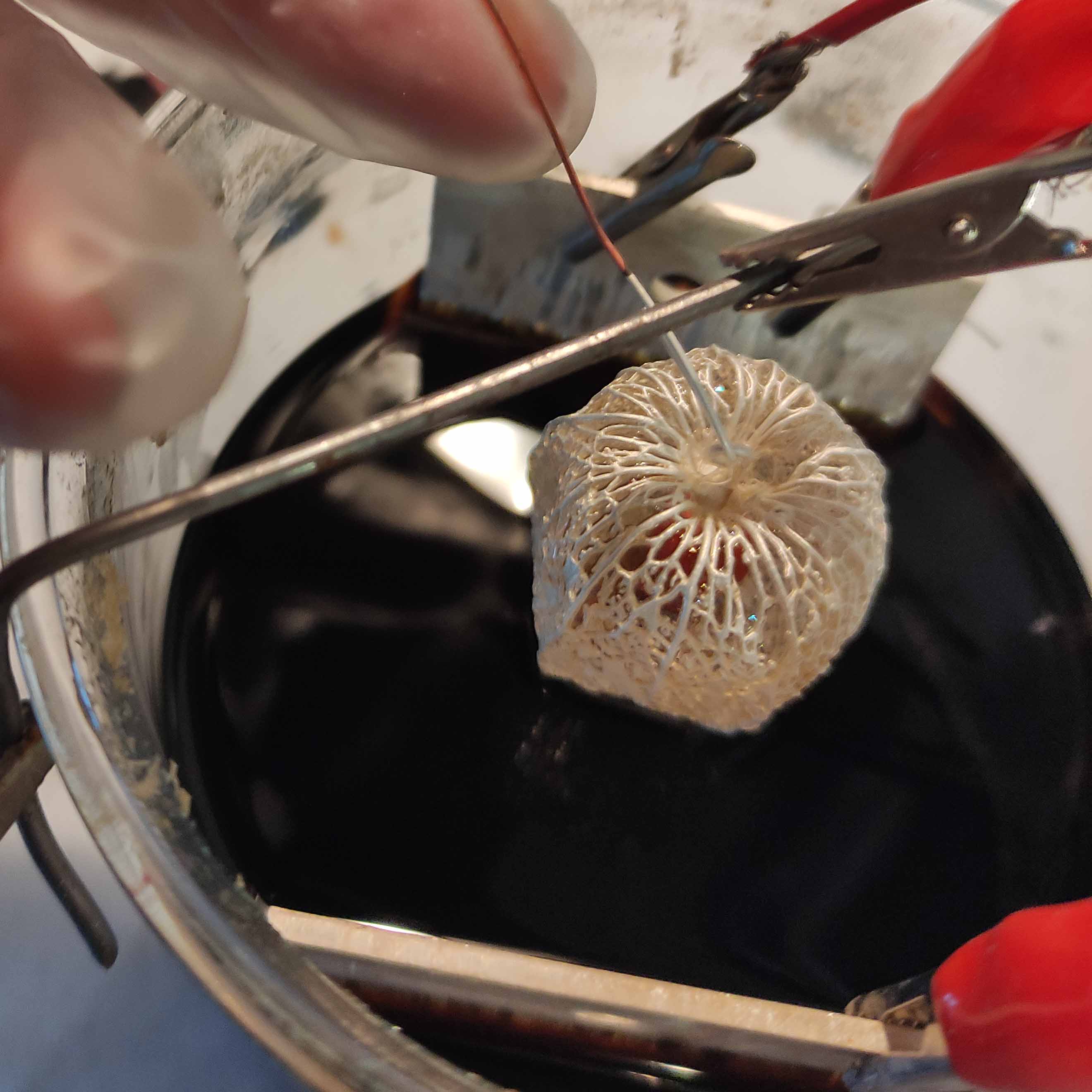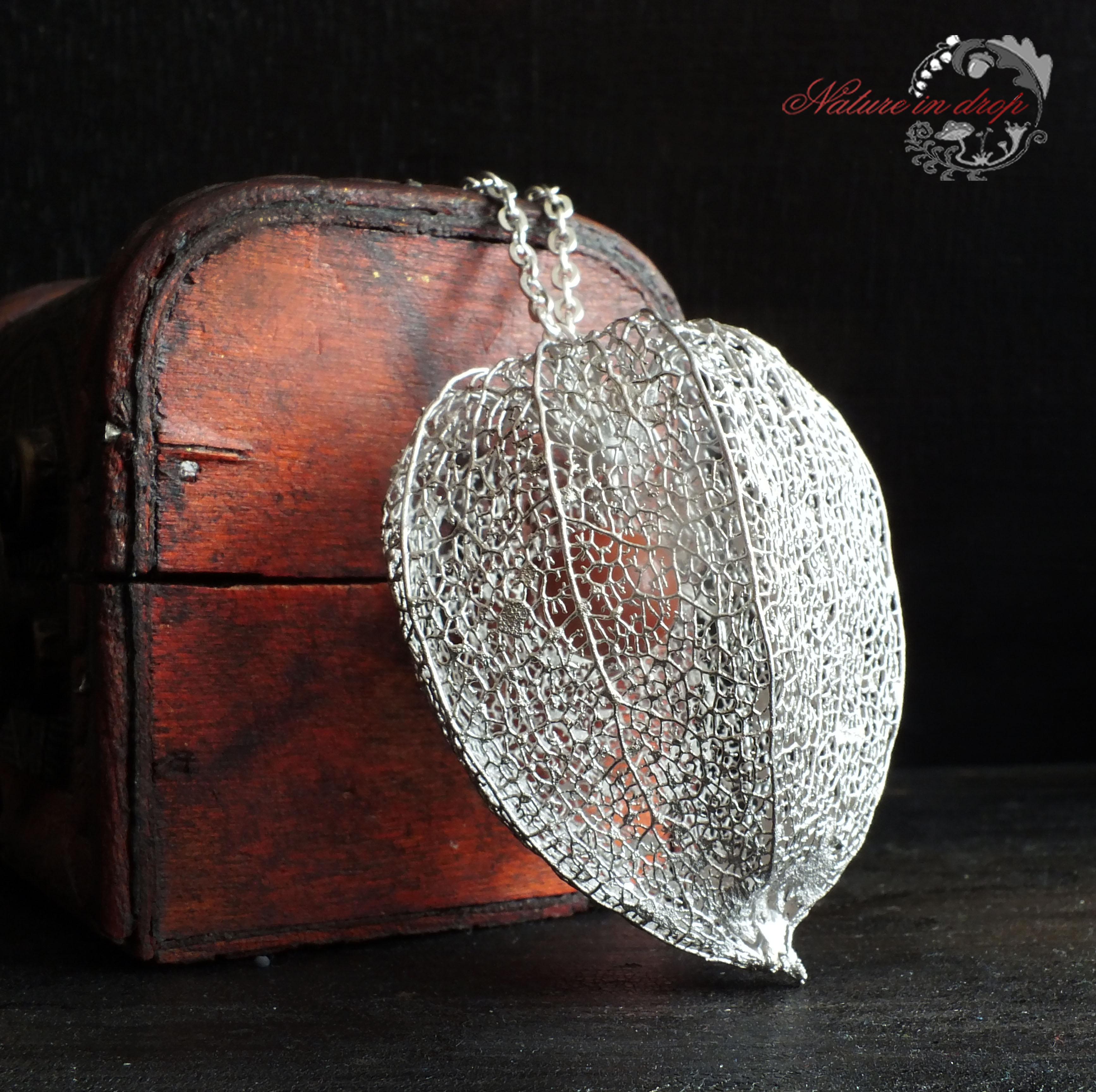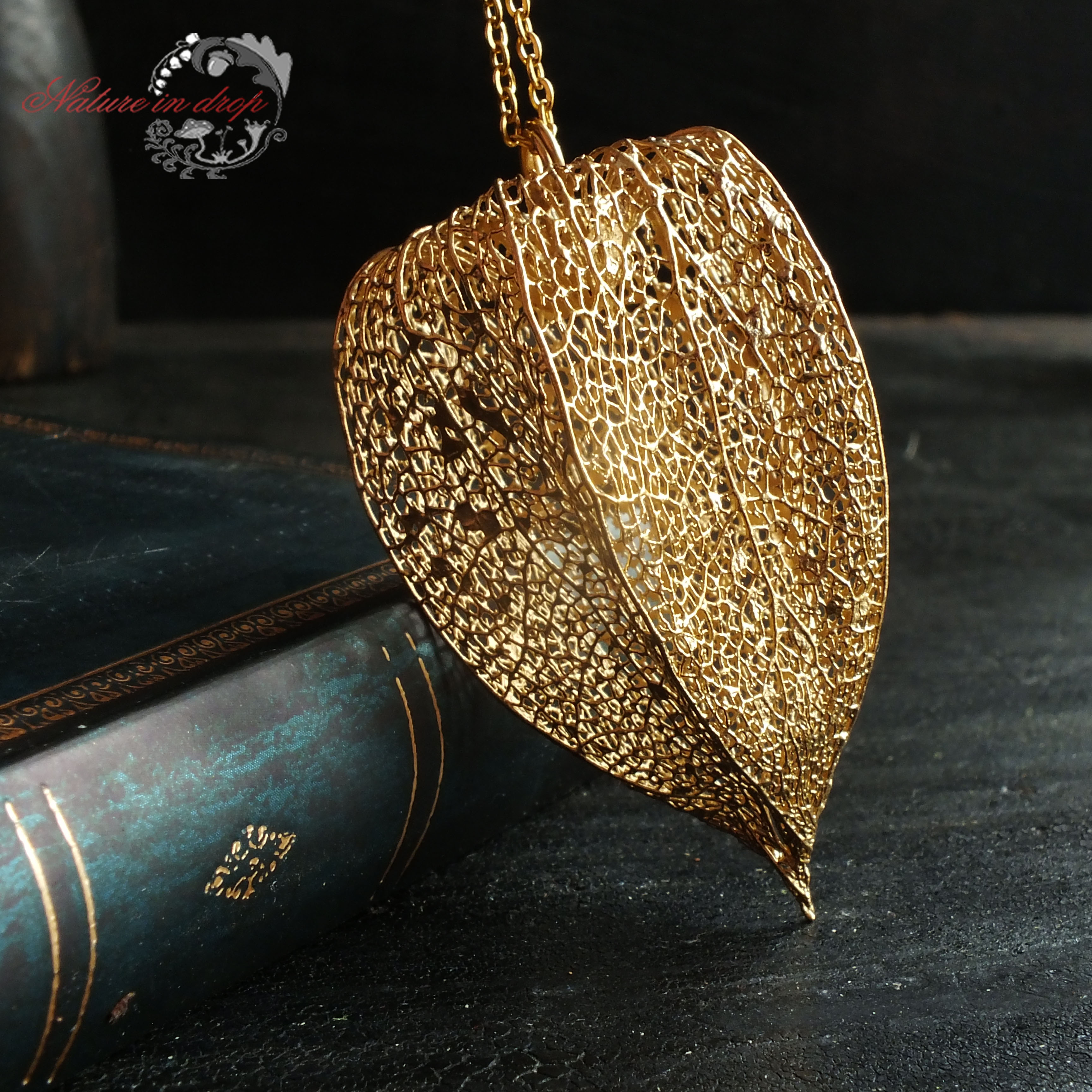The world of plated nature or
I‘m going on in electroplating
After several years that I spent exploring the method of electroforming and its use for copper plating of natural materials I felt more and more drawn to go even further, beyond ordinary metals.
This led me to a completely new chapter - the electroplating. And I'll be happy to tell you more about my journey today, trying to avoid boring terms, chemical names and procedures, emphasizing the basic differences between these methods.
From copper to precious metals
As I mentioned, at the beginning there was ELECTROFORMING, using electrolysis for plating of objects with non-metal surface. I improved this old Russian method for plating leaves, flowers, fruits and other natural materials with copper robe.



The next logical step was to add value to the jewelry with the help of silvering and gilding. The ELECTROPLATING technology, application of one metal onto another, could help me to implement my ideas. It is long-known and widely used in galvanic factories and goldsmithing. But every company hides the tweaks of the whole process for itself, and I also wanted to adapt everything to a specific use and material.
As I found nobody in the Czech Republic who would use it in jewelry making, I decided to take a pioneering path in plating natural materials with precious metals, but the path to a perfect result was very long, full of experiments and surprises. Jewelry is also a science!
My creative dream looked like this ...
..


At the first survey of literature and the internet, everything looked simple and promising - for chemical silvering, all you have to do is buy a solution, bathe a piece of jewelry in it, or treat it with an ointment, and that's it.
However, silvering and gilding will not be so easy ...
The experts told me that such a method creates a very thin layer of metal, which may be beautiful and decorative, but is absolutely impractical.
For a good result, the silver thickness must be at least 20 microns, while chemical silvering can only achieve 2-5 microns. Thicker layers are not solid and are easy wiped off.
But I just had to try it… The difference between the first and third photo is 3 months .



Sometimes you come across chemically silvered jewelry, passed off as silver - just to sell it quickly as long as the layer holds. Or the description says it is "silver-plated", but without a statement that it is chemical silvering. I recommend always asking the author for details.
The chemical silvering of natural products is also complicated by the fact that copper is a very active metal and quite quickly "crawls" over silver. So it is not the matter of its external treatment against oxidation, the problem appears "from the inside" - simply in a few months, the copper will "eat" the silver, which is nicely seen in the sample photo. That's why professionals use steel, not copper, as a basis for applying silver.
But I can only bind nature to copper! How do I do that ?!
In goldsmithing, nickel is standardly used as an insulating base for copper, but I personally did not want to work with it or offer nickel-containing jewelry to my customers. Finding the right background was literally like looking for a treasure, but with the help of experts and after a little experimentation, I found it! My customers can sleep peacefully :)
I started with the technology of galvanic silvering
A much higher quality and denser surface is provided by electrochemical or galvanic silvering. This technology is in principle similar to copper plating, in which metal is released from the plates with the help of electric current and travels through the electrolyte to the jewel. To learn how to use the technology properly, I took a course abroad. In addition, plating with precious metals belongs to the regulated trade "Goldsmith and Jeweler", which forced me to go through a retraining course and registration with the Hallmarking authority.
It is important to mention that silvering electrolytes are very toxic, so I had to spend more time equipping the workshop with a quality hood and ventilation system, get special protective equipment and comply with the legislation.
I continued to experiment with different solutions, base layers and metal thicknesses. It's a really fascinating process, my workshop has become more and more like an alchemical laboratory. I share a few shots with you. For example, my favorite moment when I take a piece of jewelry out of the bath and admire its snow-white beauty .



In the next photos you can see examples of how I learned to tame the electric current. The first attempts to experiment with current and voltage looked like this - the natural products were burned and had streaks on the surface.


It was also a challenge for me to calculate the thickness of silver for each size of jewelry at a certain current strength. As I wrote, with a smaller thickness of silver, copper easily crawls through after a while. And that's why I record and check the calculations of each piece of jewelry after each stage.


I gave my friends the first experimental pieces and they were given the task of immediately reporting any changes of the metal surface. Thank you very much everyone.
Rhodium - salvage of silver
Silver is known to be a very fine, easily oxidating metal that is prone to abrasion, and antioxidants only slightly extend the life and brightness of the metal. And that's why I also applied rhodium on some jewelry - a precious metal that prevents premature blackening and is well tolerated by people with metal allergies.
The result was surprisingly good. After half a year, most silver-plated jewelry had signs of oxidation and abrasion, the rhodium-plated still look the same. And thanks to rhodium plating, the jewelry acquires not only quality and durability, but also a stronger silver shade, silver itself is more white.



And I really enjoyed the process itself - bubbling in a colored solution is absolutely breathtaking!

The result itself is beautiful, but as time has shown, in places where the hermeticity of the base layer is broken, the nature wins and manifests itself as a stain. So you really need to pay attention to the uniformity and strength of the base.
Can I apply ticklish gold? Managed!
And now the highest level - gold! First again briefly about the concepts.
Gilding technologies include, for example, fire gilding, gilding with plates, galvanic gilding and steam gilding.
Of course, I completed the course and experimented with galvanic plating in solution with gold cyanide. Again, tons of professional literature, consultations, experiments.
As with silver, my first task was to find the base layer, because gold practically does not stick to copper at all. And copper crawls very quickly through the expensive layer of metal - I'm attaching a photo of this phenomenon as evidence.


It is generally assumed that a layer of 1 micron corresponds to one year of active wearing.
Most jewelry belonging to bijou has a layer of gold up to three microns, 4-6 microns are more solid and 8-10 microns are elite. By gilding with 23 carat gold, I managed to reach a layer of 6 microns, which I consider a success.
And I must say that of all the methods of plating, the gilding made me the least problem. Because I've had so many attempts that it just couldn't go wrong :) So that's how gold is born…


More colors? Yes!
But I didn't stop even at this stage :-) and I decided to try the contact application of precious metal on jewelry. And I was absolutely blown away by the possibilities of this technique! Contact plating is based on the same principle - with the help of electric current, the precious metal is precipitated from the solution, only that it is applied only to a certain place.
I was most interested in highlighting natural veins and cracks on the leaf. In the photos you can see the transformations of the silver-plated leaf into shades of yellow, rose and green gold.



I will also show off the process and possibilities of contact gilding.
.



In conclusion, I can say that the path of tying natural materials into metal is not fast and each stage is very demanding, both in terms of time and money. The result is never certain, I accept this with respect to the power of Mother Nature.


The technology of electroplating is suitable for natural products, but it is necessary to meet a slightly larger number of conditions and use many tweaks.
But the result is worth it, isn't it? I think my new collection NOBLE NATURE is proof of that. :)
Foto by Tom Kasal, Olga Vondrakova, Daria Efremenko

